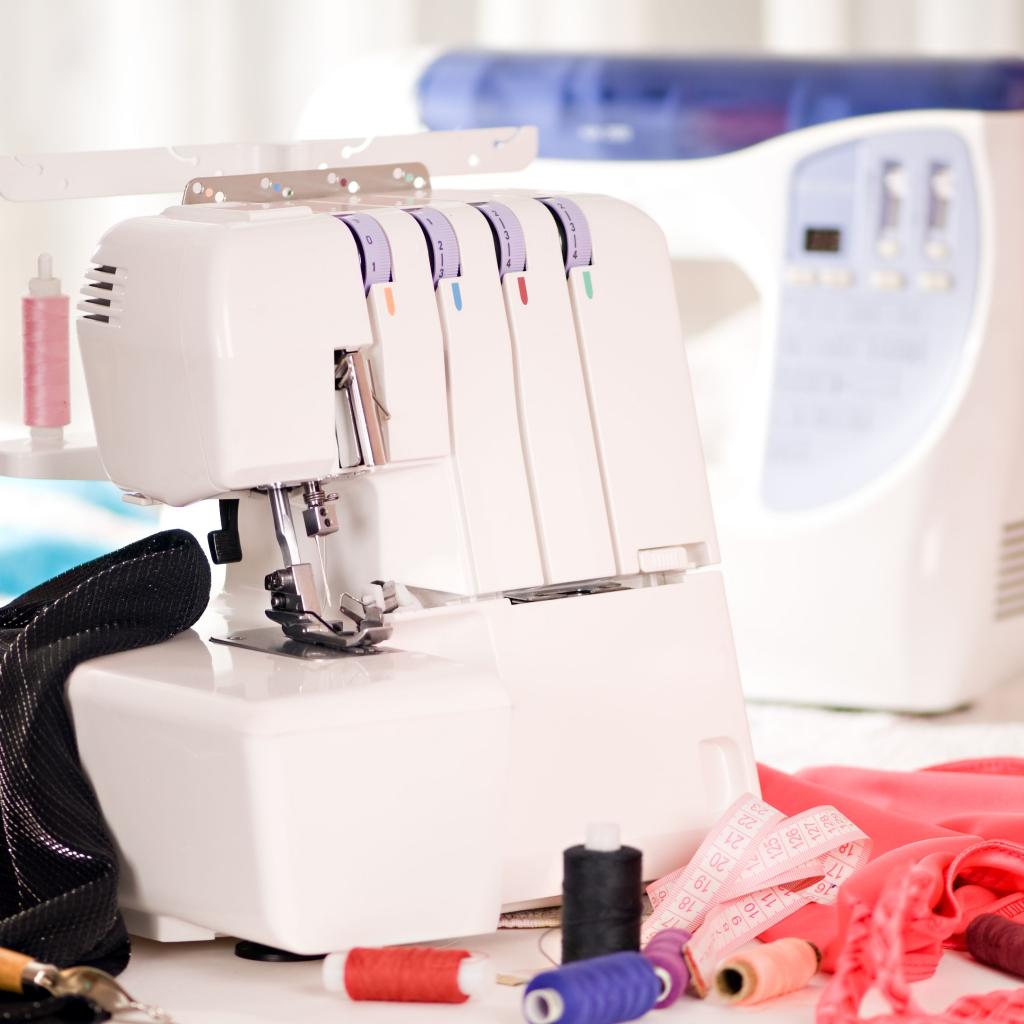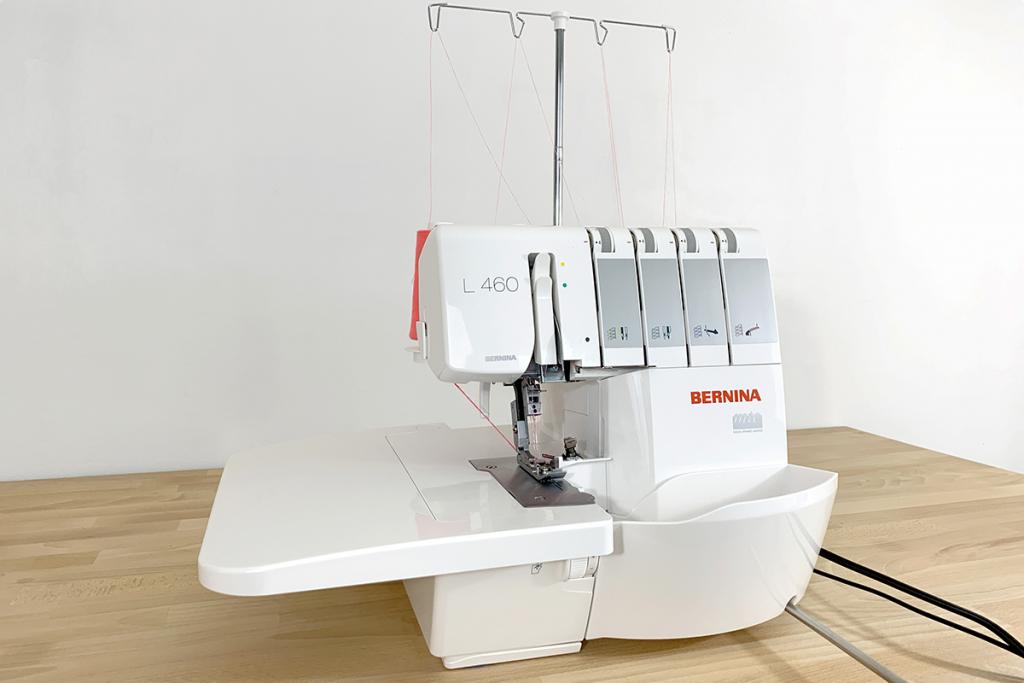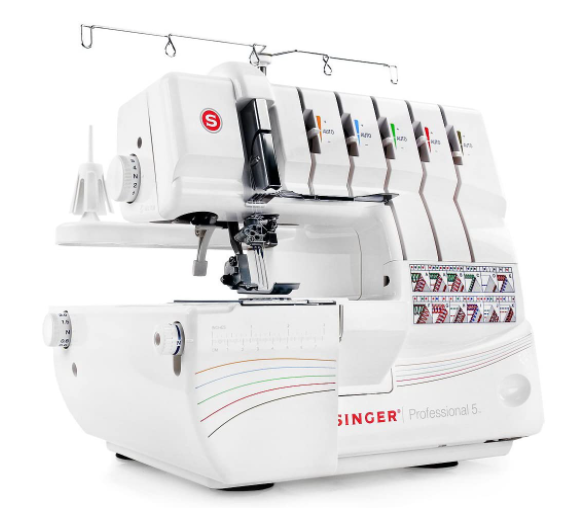Here, we’ll explain what serging is, what a serger does, how to use one, and whether or not you should buy one. This comparison of a serger and a sewing machine will help you to fully understand the differences. There are several factors to consider when deciding whether or not you need one for your job or if you can accomplish the same thing with a sewing machine. When it comes to purchasing a serger, we’ll give you with a general overview (in the form of recommendations) to help you make the best choice.
- How To Measure And Sew Curtains? 8 Easy To Follow Steps For You!
- How To Thread A Janome Sewing Machine? What You Need To Know
- How To Take Apart A Husqvarna Sewing Machine? Step by Step Instructions
- Sewing Basics: How Big Is 46 x 60 Blanket?
- How To Sew A Zipper In A Pillow? Complete Step-by-Step Guide

What Is Serging?
To keep the fabric from unraveling, serging involves sewing around the edge of the garment and then snipping the threads. Overlocking is a common term for this procedure. Depending on where you live, the term serging can be used interchangeably with overclocking in sewing.
Overlocking or serging your fabric’s edge edges prevents them from sagging and gives your fabric a polished appearance. Overlockers and sergers are commonly used to perform serging. You can use it to serge or overlock the edges of your garments with this machine. The Zig-zag stitch can be used to finish your fabric if you don’t have a serger.
What Is Sergering Used For?
Using a serger to finish the edges of your fabric will give it a more polished look. But this isn’t the end of the story: Because of the large number of blades and threads, this field might be scary to individuals who are new to it. But after you get used to using it, you’ll realize exactly how crucial it is. Using a serger, you may sew, trim, and finish your cloth all in one step. The best part is that everything is done at the same time.
- In order to sew seams, you can use sergers, which allow you to stitch a seam while trimming the excess material and then covering a raw fabric edge. All sergers use a stitch known as the four-thread stitch to build this type of stitch. This stitch’s sewn seams won’t fall apart. For stretch sewing, it is particularly useful since it allows the seam to retain its stretch.
- A three-thread overcast stitch is suitable for edging a single piece of material. As the edges are rolled overcast, a cut will be made to the fabric.
- Seams with no seam allowance, such as flatlock, are attractive and reversible. Adding a new shade to your craft is as simple as using different colors of looper and needle thread. It is possible to flatlock two different fabrics together.
- Your ability to manufacture hems with neatly rolled edges It can be good to use a serger machine to ensure that the hems of your garments are consistent and rolled up. Wedding veils, napkins, and scarves will all need to be hemmed. These hems would be simple to sew with a serger.
- Accommodating Tightly woven cloth A serger’s differential speed can be altered to accommodate materials that pucker or stretch. Stretching fabric or stretching out puckering fabric is as simple as adjusting the forward and rear feed dog speed ratios on your serger.
- Sergers can be used to gather fabric, which is a little-known fact. Find out how to use a serger to gather ideas. In order to gather a sewing machine, sew two parallel lines of straight stitches that may be pulled apart to gather the threads.
Of course, not all sergers have access to all of these features. As a result, before making a final decision on a serger, you should run several tests. After finding a device capable of these duties, you’ll have to adjust the settings by following the manual.
Why Use a Serger?
Sergeants may move QUICKLY. To patch a broken seam, to make a pair of pajamas for a growing child, or to make a last-minute gift, you can use a sewing machine.
Your clothing and accessories will be more durable because to the stronger and more flexible stitches produced by a serger’s machine.
Also included are blades that let you to trim the excess fabric as you sew. This implies that you don’t have to cut any more hems to get the right fit.
Is A Serger Necessary?
Xem thêm : 2 Steps to Sew a Blind Hem Stitch Using a Sewing Machine? Step-by-Step Tutorial
If you decide to invest in a serger, you have sole discretion over whether or not to get one. It’s critical to consider your sewing needs and budget while making this decision. Even if you’re just sewing for fun at home, you might not need a serger as much as someone who’s doing it professionally would.
An overlocker is a must-have for anyone in the corporate world who cares about the appearance of their clothing and wants to avoid unsightly unraveling seams. When your sewing machine can’t handle stretchy fabrics like Lycra, you may easily avoid using them if you sew for relaxation. Professional seamstresses have the same options.
Although it is a vital tool for individuals in the sewing profession, the serger is not suitable for use by sewers in their own homes.
Tips For Buying A Serger
It’s possible that you’ve already purchased a serger if you are familiar with the notion of serging. Congratulations! Here are a few guidelines to help you choose from the many alternatives available to you:
- So that you can fully evaluate the product before making a purchase. Buying a broken equipment isn’t a waste of money.
- Don’t be intimidated by the large number of thread spools. For the purpose of keeping the needle’s thread secure, sergers employ the use of looper threads. An automatic threader will save you a lot of time when it comes to threading. Because they cost more, I think self-threading machines are worth it.
- Select a serger that has a color-coded display and thread guides to make your life easier when sewing. Using these instructions will assist you avoid having to constantly refer to your sewing machine’s manual.
- There are machines with four and three threads. With this option, you’ll get better quality seams that aren’t as neat as the other two. A four-thread serger is my go-to machine.
- For simplicity of use, oiling spots should be marked.
- Select a well-known brand such as Brother, Singer, Janome, Juki, or Pfaff to purchase your sewing machine. They have a strong warranty and will last for a long time. For the past 20 years I’ve owned a Singer serger and a Janome for nine years. Both are still functional, and I’ve never had any issues with them.
Do I Have to Have a Serger?
To stitch, the serger is not required. When sewing with modern fabrics, it can make the process easier and provide additional structural support, especially for outfits aimed for children.

Your clothes will look like they were produced with this machine.
What Is The Difference Between A Sewing Machine And A Serger?
What can you use the sewing machine for?
- Collect material
- affix the zippers if necessary.
- Buttonholes can be made.
- Attaching a piece of fabric is an option.
- assemble the piping
- The hem is rolled up.
- Hemstitching with no visible stitching
- To put it another way: it is an overlock stitch.
- Straight and Zigzag stitches are available.
- Embroidery stitching
What can you use a serger machine sewing machine for?
- Glue the pipe to the wall.
- Collect material
- To put it another way: it is an overlock stitch.
- The hem is rolled up.
- The hem is sewn with a blind stitch.
- Stitching a flatlock
Final decision
The sewing machine is able to do more work, making it ideal for those who are just beginning to sew. The serger, on the other hand, should be purchased if you plan to do a lot of sewing and want your projects to be completed quickly and professionally. Finally, you’ll need to use a sewing machine to stitch the fabric and finish the edges in one step, while the serger does both.
Is your sewing machine unable to perform the activities listed? Do you know how to properly lubricate your sewing machine?
Is It Worth Buying A Serger?
Xem thêm : What Is A Thimble Used For In Sewing?
It’s essential to have a serger in order to sew and finish the edges of a garment at the same time. As a result, this decreases the amount of time and effort needed, especially for commercial projects that demand expert finishing. It’s also possible that you don’t want to be limited to zigzag stitching when finishing seams or sewing things with rolled edges.
Can a Serger Replace My Regular Sewing Machine?
While the serger is capable of completing some jobs in their entirety, it is not a viable alternative to a regular sewing machine. Zippers, buttonholes, topstitching, and other finishing touches will still necessitate the use of a conventional sewing machine. This task is beyond the capabilities of a serger.
Do I Need A Serger To Hem?
The serger is not required to sew, but it is an easy and fast method of completing the sewing task. Since woven cloth can easily fray, this is especially useful when you’re completing it. However, if you don’t have a serger, you can still sew seams with a sewing machine.
How do you complete the hem without using the use of a serger?
If you don’t have a serger, you can use a zigzag or overedge stitch, turned under edges, bias binding edges, or a French seam to finish the edges of your creation. For medium-to-heavy materials, zigzag stitching is the most popular and easiest option. The zigzag stitch can be used to make the garment’s edges.
- When sewing a seam, make sure to use the correct seam allowance. Make zigzag stitches all the way around it.
- Get rid of any extra waste.
- The zigzag stitch can be sewn on the edge of the fabric before stitching the seams if you choose not to cut.
If you use the sewing machine to make a zigzag stitch, you may want to learn how to configure the machine. If you possess a Kenmore sewing machine, here’s how to thread it.

Can You Use A Serger For Regular Sewing?
In order to use a serger regularly, you must be comfortable with the way it stitches. In the case of slack or untight ones, you should adjust the machine’s tension knob accordingly. There is no substitute for a sewing machine because a serger does not have the ability to make a variety of stitches.
Conclusion
Simple as that! What is a serger sewing machine, and how does it work? Overlocking stitches are used to complete hems on this machine. It’s a great machine to have on its own because it allows you to sew projects with a more professional finish and does so quickly.
No, I’m not talking about sewing here. See our essay on sewing interfacing and its significance.
Nguồn: https://spasifikmag.com
Danh mục: Sewing Tips










